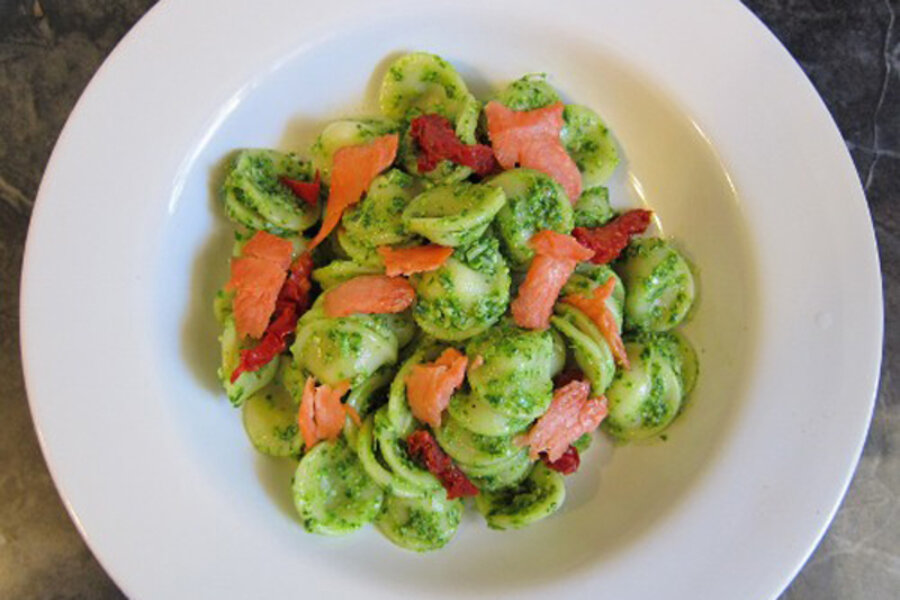Beet greens pesto
Loading...
Last week, thanks to the folks at Oxbow Farm, I cooked beets for the first time ever, and was quite happy with my Golden Summer Soup. When I was cleaning and trimming the beets, I held onto the beet greens. There was no way I was throwing away a bunch of fresh, nutritious greens. I washed them well, and saved them in the refrigerator for later use. I had initially planned to do a simple braise with them, just like I would with chard or other greens.
That would have been good. But you know what is even better? Pesto. Pesto is so much more than just basil. It can be made with virtually any herb (I’m partial to mint or cilantro), or with greens. Spinach, chard, nettles, kale – you name it, most greens can be used for pesto.
Sometimes I buy pine nuts from the bulk container at the co-op, but they can get expensive. I also like to use raw sunflower seeds or walnuts in my pesto.
A quick blanch in boiling water is helpful to soften the greens and to preserve their bright color.
You can also freeze extra pesto in an ice cube tray. This is a nice way to save some of the abundance of summer for later. You will want a special designated ice cube tray for this, as the pesto will definitely discolor the tray and leave behind a whiff of garlic. Put about 1 tablespoon of pesto in each space in tray and freeze. Once frozen, remove pesto cubes from tray, place in an airtight container, and keep in freezer. Remove and thaw cubes as needed for cooking.
Beet Green and Kale Pesto
8 cups beet greens (or beet green/kale combo in any proportion)
1/2 cup olive oil
1-2 cloves garlic, peeled and smashed
1/2 cup sunflower seeds
1/2 cup shredded Parmesan cheese
squeeze of fresh lemon juice
salt and pepper
Half fill stockpot with water, cover, and bring to a boil. Meanwhile, fill large bowl with ice water to blanch greens.
Clean beet greens well and remove stems. One bunch of beets will yield 3-4 cups of greens. Add enough kale leaves (also cleaned and with stems removed) to make 8 cups of greens.
When water is boiling, add greens and stir. Cook for two minutes, then scoop greens from boiling water with a large slotted spoon and plunge into ice water. (If you are in the process of making dinner, add pasta to the water that is already boiling and set timer.)
Swirl greens around in ice water to cool. Drain and gently squeeze out excess water. Roughly chop greens. Add greens, oil, garlic, sunflower seeds, Parmesan, and lemon juice to food processor (or use immersion blender) and process until uniform and smooth – you still want tiny bits of the greens, not a purée. Taste and add salt, pepper, and additional lemon juice if needed.
Makes about 1-1/2 cups. Use about 2 tablespoons of pesto per serving for pasta.






